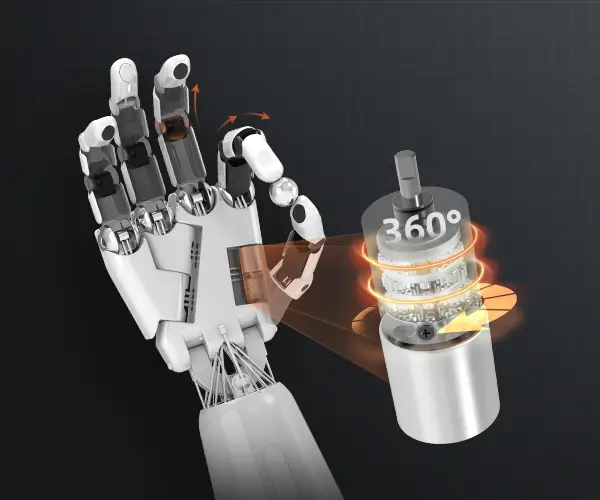Unleashing Precision and Power: The Ultimate Guide to Gear Drive Motors with Speed Control
In the vast landscape of industrial machinery and mechanical systems, few components are as vital—and as versatile—as gear drive motors with speed control. These innovative powerhouses combine the strength of gearboxes with sophisticated speed regulation, enabling machines to perform with unmatched precision and efficiency. Whether powering conveyor belts, robotic arms, or manufacturing equipment, gear drive motors are the heartbeat that keeps automation flowing smoothly.

Understanding Gear Drive Motors: An Overview
A gear drive motor is essentially a motor integrated with a gearbox—an assembly of gears designed to modify the speed and torque transferred from the motor to its load. By reducing speed and amplifying torque, gearboxes make it possible for motors to handle heavy loads and operate at desired speeds while maintaining optimal efficiency.
Imagine a typical electric motor: it has a fixed speed, often dictated by its design and power source. When a machine requires variable speed operation, a simple motor might fall short. This is where gear drive systems shine—they adapt to different operational needs, allowing for fine-tuned control over speed and torque output.
The Integration of Speed Control: Unlocking Flexibility
While traditional gear drive motors operate at fixed speeds, modern technology offers integrated speed control features. This is a game-changer across industries, allowing operators to adjust motor speed dynamically to meet process requirements, improve energy efficiency, or respond quickly to changing conditions.
Speed control is typically achieved through various methods, including:
Variable Frequency Drives (VFDs): These devices adjust the power frequency supplied to AC motors, enabling smooth and precise speed variation. DC Drives: Used with DC motors, these controllers modulate voltage to control speed effectively. Smart Controllers and Feedback Systems: Incorporating sensors like encoders or tachometers, these systems enable closed-loop feedback, maintaining desired speeds even under varying load conditions.
By combining gearboxes with advanced speed control, manufacturers create a flexible motor system capable of high performance under diverse operational demands.
The Advantages of Gear Drive Motors with Speed Control
What makes gear drive motors with speed control stand out? Here are several compelling benefits:
Enhanced Precision: The combined system ensures that machinery operates at exact speeds required for delicate or complex tasks. This accuracy can significantly improve product quality and consistency.
Energy Efficiency: Adjustable speed control means motors use only the energy needed for their current task. Reducing unnecessary power consumption translates into lower operational costs and a greener footprint.
Extended Equipment Life: Variable speed operation minimizes mechanical stress and reduces wear and tear, leading to longer service life for both the motor and the gearbox.
Dynamic Process Optimization: Industries like manufacturing, packaging, and material handling can rapidly adapt to new production lines or product specifications without hardware changes, saving downtime and costs.
Improved Safety: Precise speed control helps prevent accidents caused by overspeeding or mechanical overloads, thereby creating safer working environments.
Versatility: These motors are suitable for a wide range of applications—from low-torque, high-speed scenarios to heavy-duty, high-torque tasks. Their adaptability makes them indispensable in modern automation.
Applications Ranging from Industry to Innovation
Gear drive motors with speed control are found in many sectors:
Manufacturing: They handle assembly lines, conveyor systems, and robotic movements, providing seamless control and synchronization. Agriculture: They power automated feed systems and equipment with variable operational demands. HVAC Systems: Ensuring optimal air flow with adjustable blower speeds enhances comfort and energy savings. Material Handling: Cranes, hoists, and lifts rely on these motors for precise, controlled movement under heavy loads. Renewable Energy: Wind turbines and other green technologies utilize gear drive systems with speed regulation to maximize efficiency under changing environmental conditions.
Choosing the Right Gear Drive Motor with Speed Control
Selecting the ideal system involves evaluating several factors:
Load characteristics: Continuous or intermittent? Heavy or light? The motor and gearbox must match the load profile. Speed requirements: What ranges of speed are needed? Is rapid variation necessary? Environmental conditions: Will the system face dust, moisture, or extreme temperatures? Control complexity: Do you need simple manual adjustments, or is high-precision automated control required? Energy considerations: Prioritize energy-efficient models to reduce operational costs.
Innovations in materials, electronic controls, and design have expanded the capabilities of gear drive motors, making them more adaptable than ever before.
Established in 2005, Kpower has been dedicated to a professional compact motion unit manufacturer, headquartered in Dongguan, Guangdong Province, China.




































